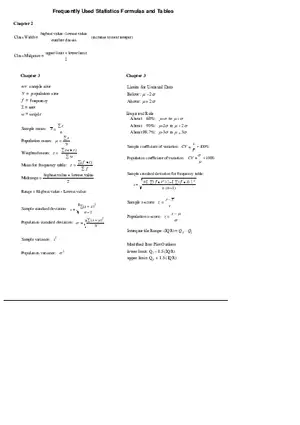Lecture Note
Statistics
-
University:
California State University, Northridge -
Course:
MATH 440A | Mathematical Statistics I Academic year:
2010
-
Views:
69
Pages:
2
Author:
Rory Rhodes
Related Documents
- Introductory Statistics, Lecture 14
- Introductory Statistics. Chapter 5
- Introductory Statistics, Chapter 2, Part 1
- Statistics, Test 2 Answers
- Introductory Statistics, Lecture 18
- Homework 12 in Statistics, Answers
- Introductory Statistics, Test 3 Answers
- Introductory Statistics, Homework 3, Answers
- 13-2 Sign Test
- Introductory Statistics. Lecture 17, Sections 9.1, 9.2
- Math 13 Solutions to the Final Exam 2010
- Statistics, Chapter 2 Discussion Problem Solutions
- Introductory Statistics, Lecture 9
- Statistics. Homework 1 Solutions
- Applying the Chi-Square Goodness of Fit Test for Frequency Data Analysis
- Statistics - Answer Key
- Introductory Statistics, Chapter 2, Part 2
- Homework 8, Answers
- Introductory Statistics, Homework 18
Statistics


Recommended Documents
Report
Tell us what’s wrong with it:
Thanks, got it!
We will moderate it soon!
Report
Tell us what’s wrong with it:
Free up your schedule!
Our EduBirdie Experts Are Here for You 24/7! Just fill out a form and let us know how we can assist you.
Take 5 seconds to unlock
Enter your email below and get instant access to your document
